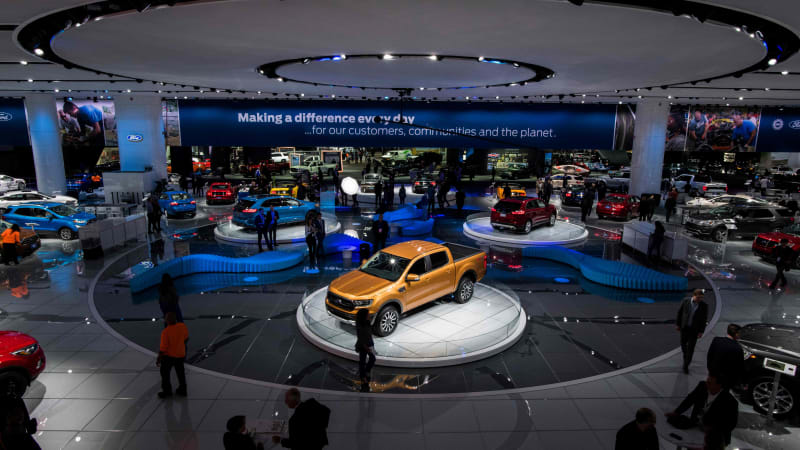The future of Detroit’s North American International Auto Show may still be in flux, as organizers mull whether to leapfrog the annual event from January to October, but new numbers around media coverage from this year’s show illustrate why moving the event isn’t exactly a no-brainer.
Data compiled by Prime Research for the Detroit Auto Dealers Association, which organizes the event, shows that coverage from the 2018 NAIAS far outpaced coverage from the most recent L.A. Auto Show and CES in January, as the Detroit Free Press points out. Its global reach was almost as big as the 2017 Frankfurt Motor Show, the world’s largest.
U.S. media coverage for the 2018 Detroit auto show reached 564 million people, an increase of 46 percent from the previous year. By comparison, auto- and mobility-related coverage from 2018 CES fell 23 percent in 2018 from the previous year to 161 million, while coverage from last fall’s L.A. Auto Show grew 6 percent to 285 million. Detroit’s show was also the clear winner in terms of visibility of top auto executives and spokespeople.
CES and Los Angeles are key benchmarks for Detroit. CES, held in Las Vegas, has become an increasingly important venue for automakers to showcase new technology and autonomous vehicles, and its January time frame prompted organizers to bump back NAIAS’ start date this year by a week so as to not overlap. Los Angeles, meanwhile, is held the week after Thanksgiving and would thus be in more direct competition if Detroit’s auto show moved to October.
The data don’t include coverage from the New York and Geneva auto shows, which recently concluded. Those figures, plus the full global reach of the 2018 Detroit auto show, will be reflected in a separate report expected later this spring.
There were 69 vehicle introductions at Detroit this year — including four concept vehicles — down slightly from 71 in 2017.
“We are coming off one of our strongest media metrics years fueled by significant world debuts at our show this past January,” NAIAS spokesman Max Muncey said in an email.
Detroit is the traditional start of the U.S. auto show circuit each year, but its luster has been diminished in recent years amid competition from CES, standalone vehicle reveals and as more automakers tighten their purse strings and evaluate their auto-show strategies. BMW and Mercedes-Benz have announced their intentions to skip NAIAS in 2019, adding to a steady trickle of automakers that have defected from the annual event, including Mazda, Mini, Mitsubishi, Porsche, Jaguar, Land Rover and Aston Martin.
Organizers have yet to make a decision about whether or not to shift over to a fall calendar.
On the plus side, holding the auto show in the fall would mean taking it out of conflict with CES and far less overtime paid to workers who log long hours over the holiday season to get Cobo Center ready. And of course Michigan’s weather is much nicer in October than January, inviting the possibility of outdoor reveals on the riverfront amid fall colors, and maybe even test drives.
But there are other factors weighing against a switch. Setup for NAIAS takes three months, and Cobo hosts events in September. A fall show would also put it in competition with European shows in Frankfurt and Paris, which alternate each September, and Los Angeles in late November into early December. The show is also booked for Cobo through 2025, meaning terms would have to be renegotiated.
[“Source-autoblog”]
